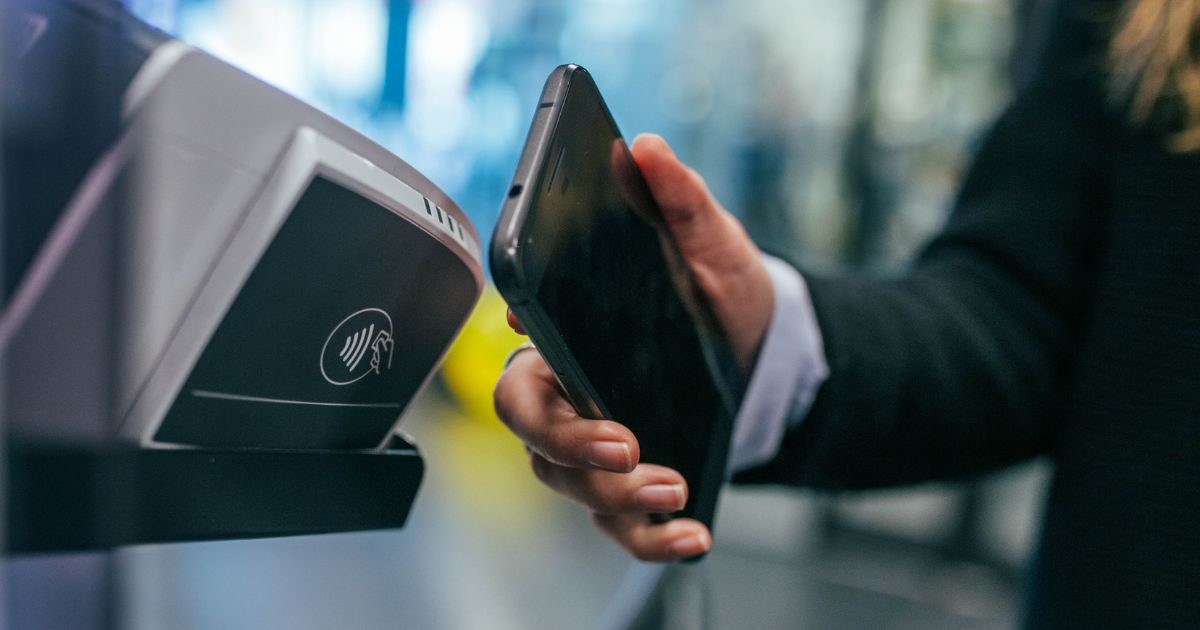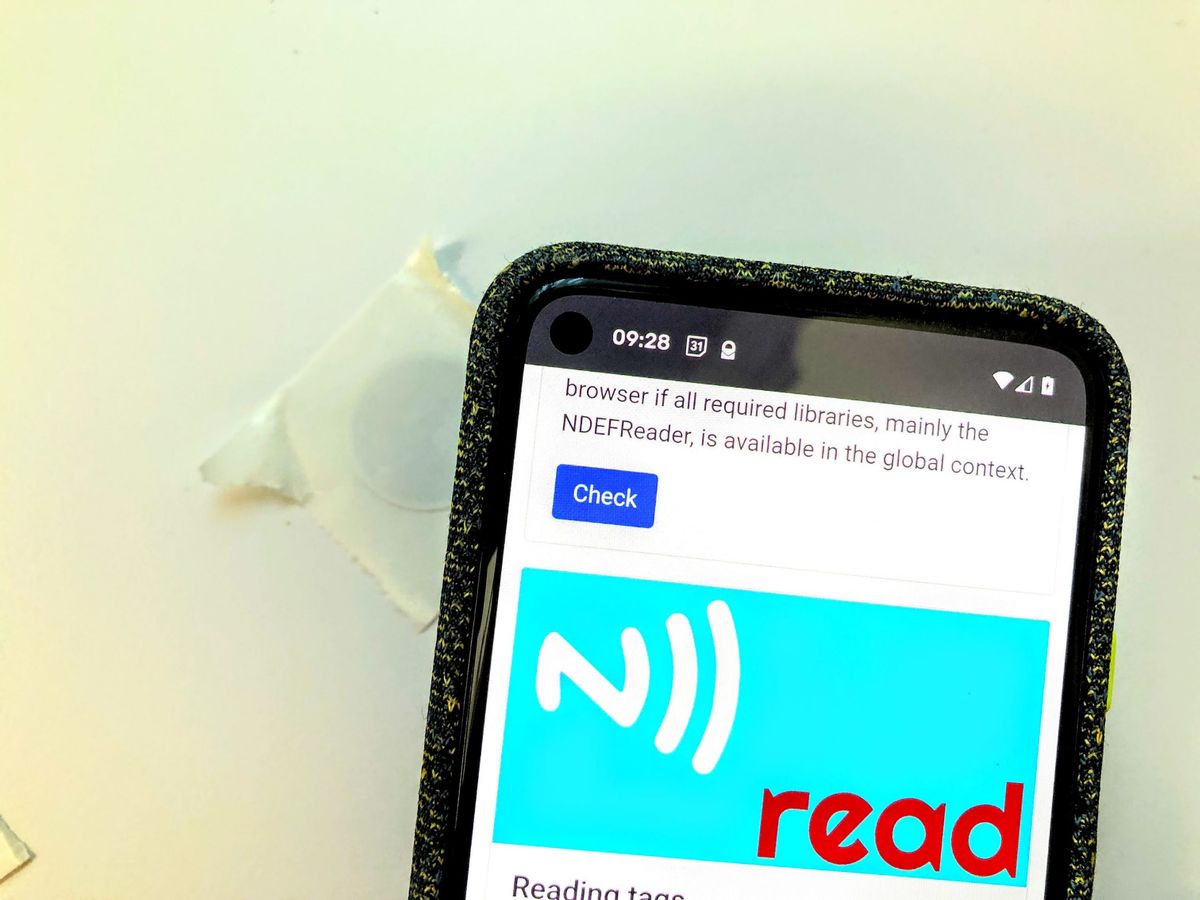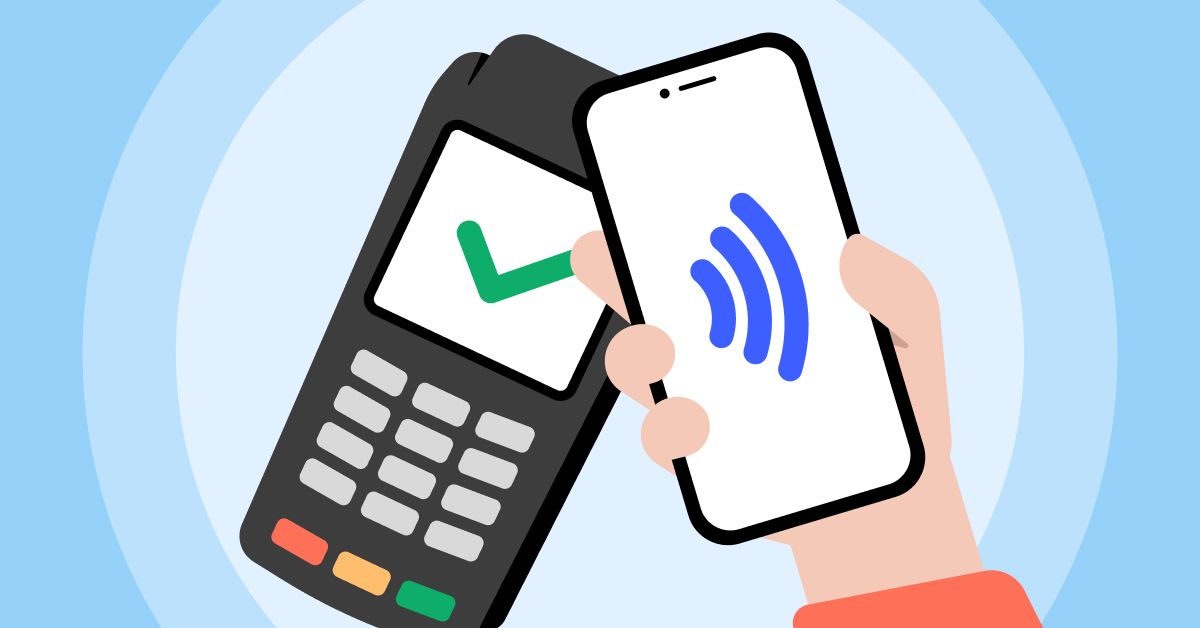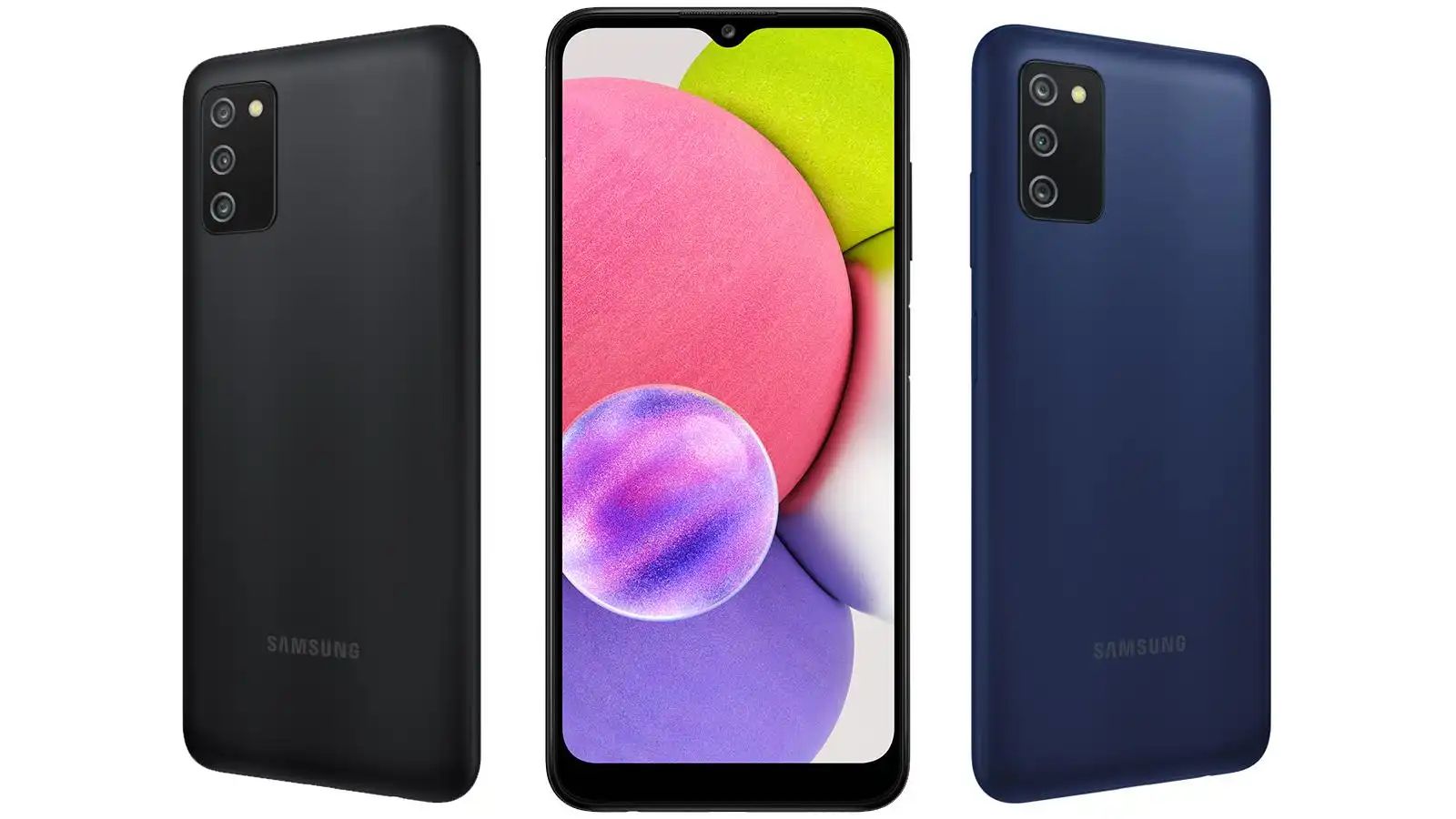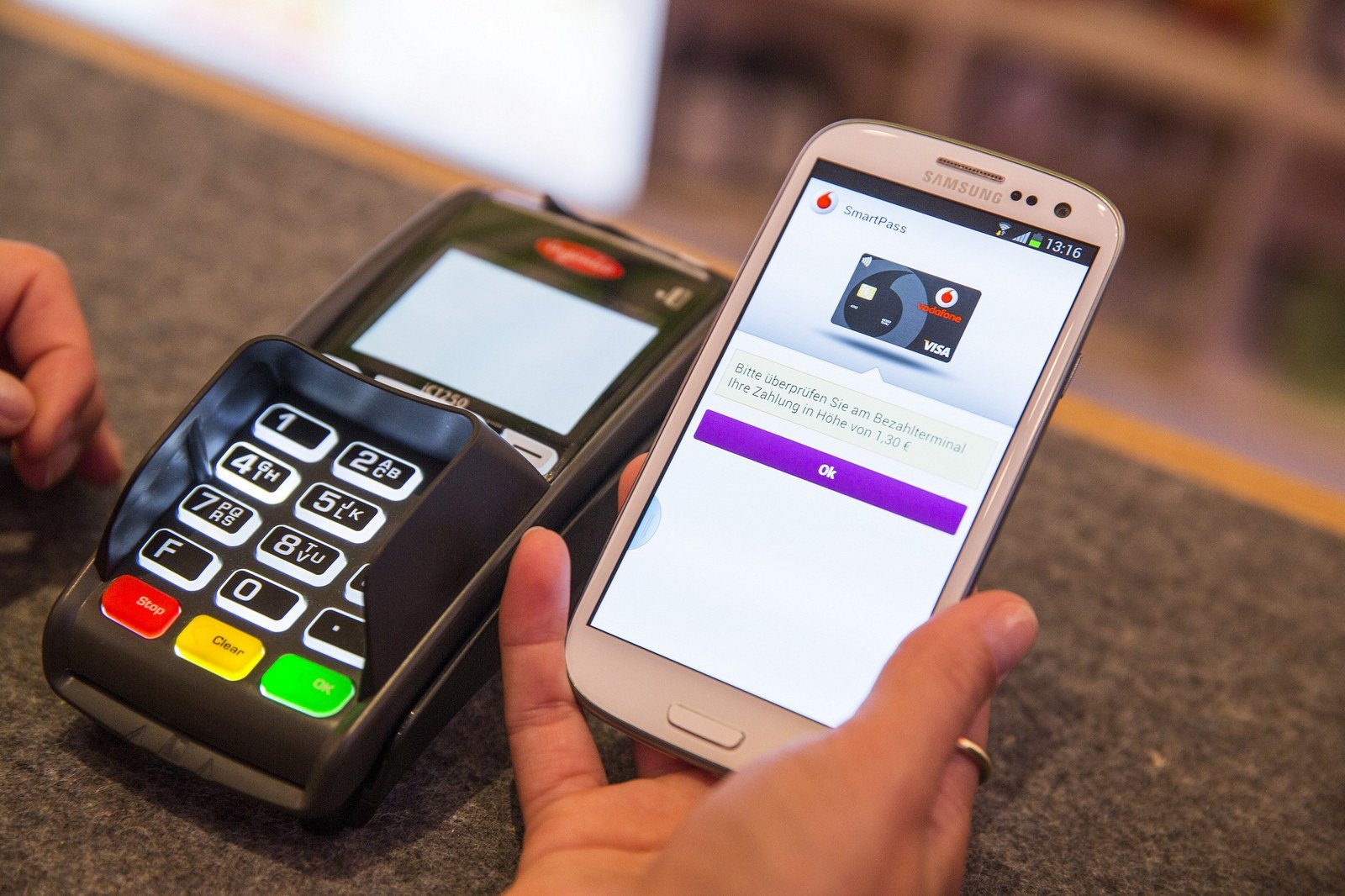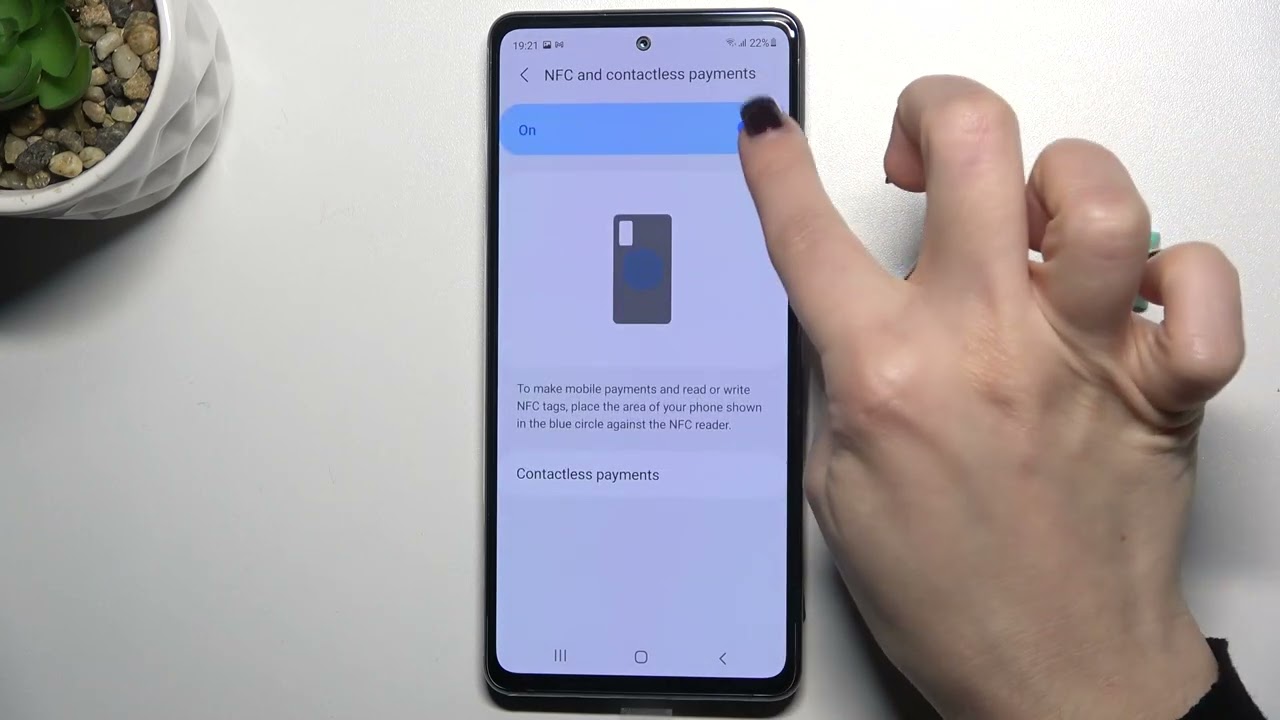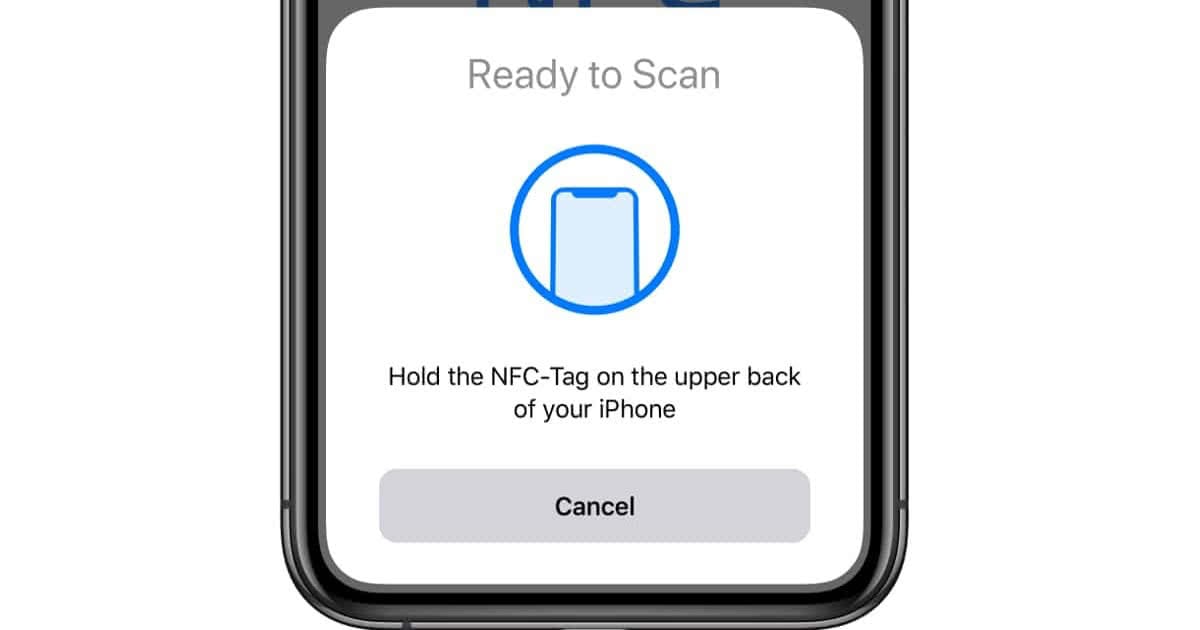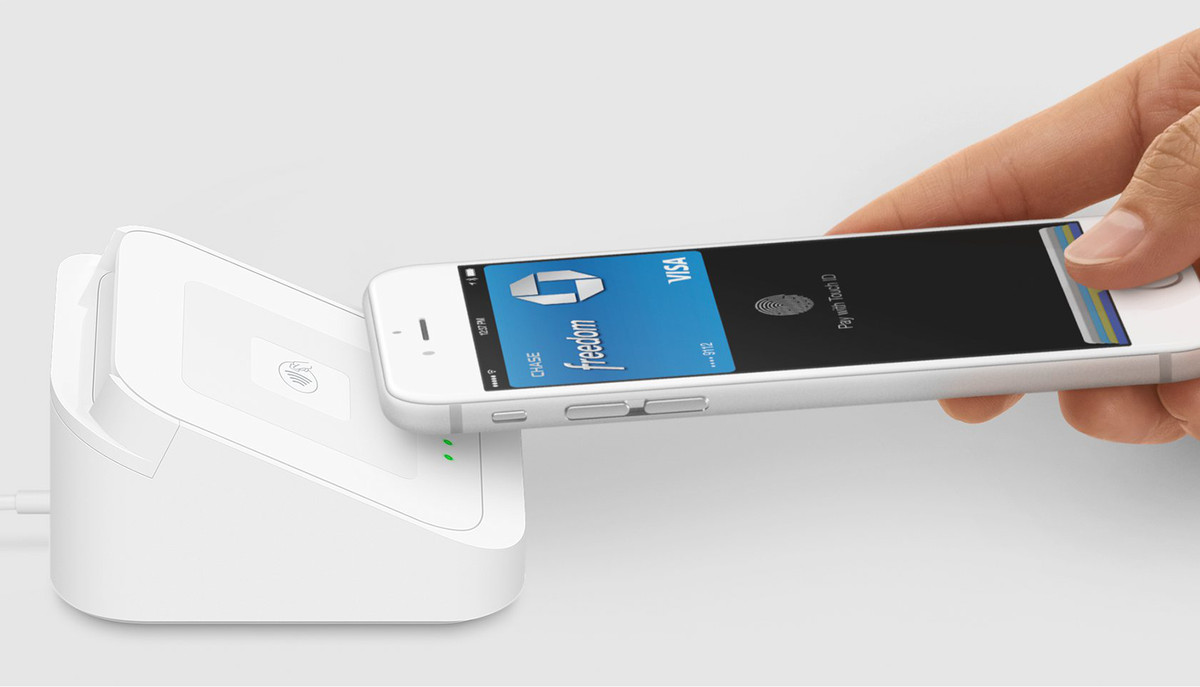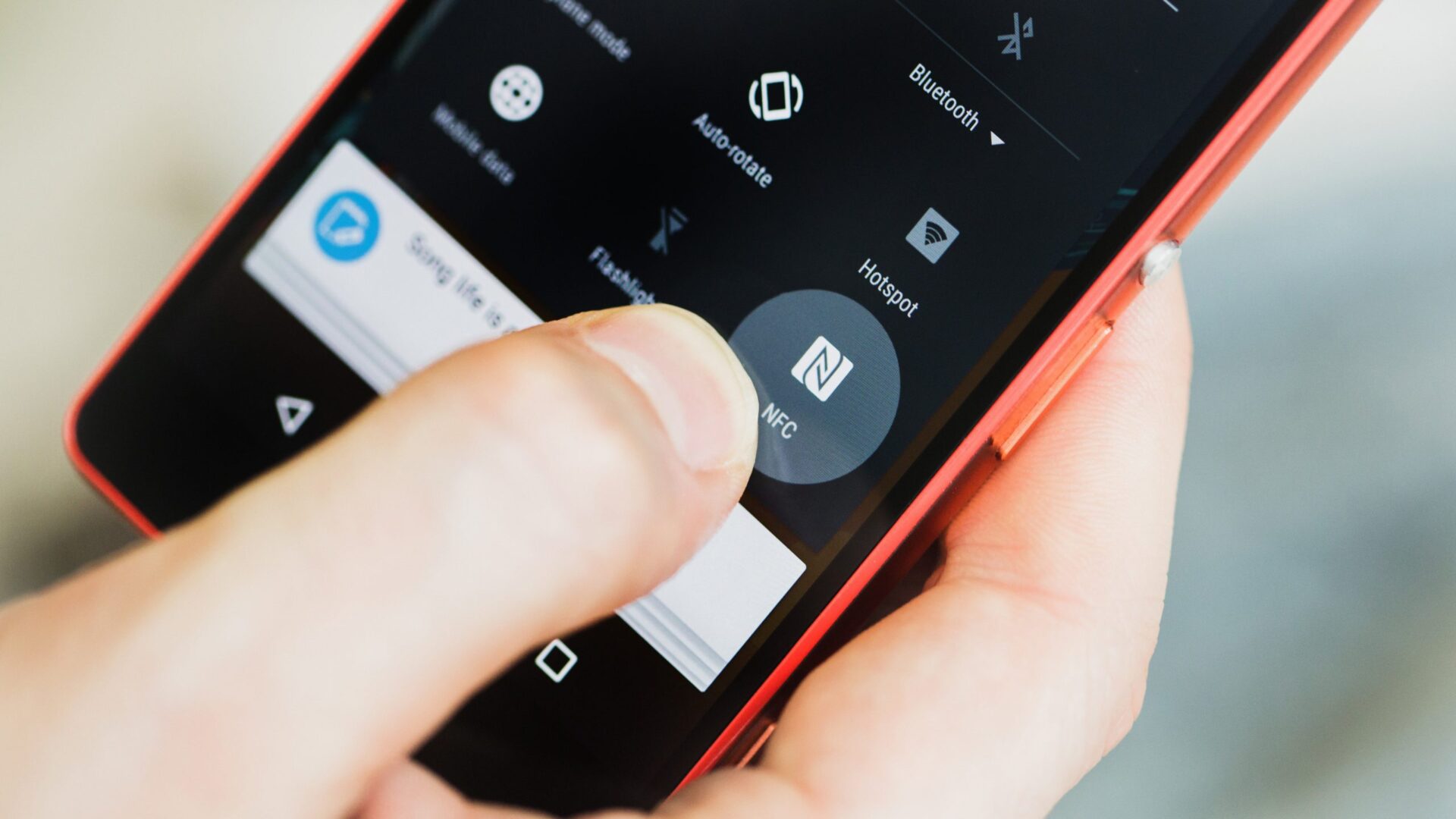Introduction
Welcome to the digital era, where technology continues to advance and integrate into our everyday lives. One such technology that has gained popularity in recent years is NFC, or Near Field Communication. NFC enables the seamless transfer of data between two devices by simply tapping them together or bringing them in close proximity. This technology has made various tasks more convenient, from making payments to sharing files and even automating processes.
Understanding the capabilities of NFC and determining if your smartphone has this feature can open up a world of possibilities. In this article, we will explore what NFC is, why it is important, and how you can check if your phone has NFC functionality. Additionally, we will highlight popular smartphone brands that offer NFC capabilities and how you can enable NFC on your device.
NFC technology allows for quick and secure communication between devices, making it ideal for contactless transactions. With NFC on your phone, you can make payments at supported retailers by simply tapping your device against a compatible payment terminal. This eliminates the need for physical cards or cash, offering a faster and more convenient way to complete transactions.
Besides payments, NFC can also enable various other capabilities on your phone. For example, you can use NFC to exchange contact information, share photos, videos, and files with other NFC-enabled devices. You can also automate tasks and settings on your phone, such as activating your Wi-Fi or Bluetooth when you reach a specific location or connecting to a wireless speaker with a simple tap.
Now that we have an overview of NFC and its potential applications, the next step is to determine if your smartphone is NFC-enabled. While NFC is commonly found on newer smartphones, it is not a standard feature on all devices. In the following sections, we will explore how you can check if your phone has NFC and provide a list of popular brands and models that support this technology.
NFC: What is it?
NFC, or Near Field Communication, is a wireless communication technology that enables the transfer of data between two devices in close proximity. It operates on radio frequency identification (RFID) technology and allows devices, such as smartphones, tablets, and even credit cards, to communicate and exchange information securely and quickly.
Unlike other wireless communication technologies like Bluetooth or Wi-Fi, NFC requires devices to be within a few centimeters of each other to establish a connection. This close proximity ensures a secure and reliable data exchange, making NFC ideal for contactless transactions and sharing small amounts of data.
NFC works on the principle of two key components: the initiator and the target. The initiator device generates an electromagnetic field, known as an NFC field, which sends out signals to connect with the target device. Once the connection is established, the devices can transmit data bidirectionally.
One of the primary uses of NFC is for contactless mobile payments. With an NFC-enabled device, you can simply tap your phone against a payment terminal to initiate a transaction. The NFC technology securely transfers your payment information and completes the transaction, eliminating the need for physical credit or debit cards.
Besides payments, NFC has several other applications. It can be used for sharing data between devices by tapping them together, allowing you to quickly transfer photos, videos, and other files. NFC can also automate tasks on your phone based on triggers, such as connecting to a Wi-Fi network when you enter a specific location or launching a specific app when you tap an NFC tag.
Overall, NFC is a versatile technology that offers convenience and efficiency in various aspects of our lives. Supported by numerous smartphones and other devices, NFC has become increasingly popular and is expected to continue playing a prominent role in the future of wireless communication.
Why do I need NFC on my phone?
NFC technology on your phone offers a multitude of benefits and opens up a whole new world of possibilities. Here are a few reasons why having NFC on your phone can greatly enhance your smartphone experience:
Contactless Payments: NFC allows you to make secure contactless payments with your phone. By simply tapping your device against an NFC-enabled payment terminal, you can quickly and conveniently complete transactions without the need for physical cards or cash. This feature is not only convenient but also offers enhanced security as it eliminates the risk of card skimming or theft.
Quick and Easy Data Transfer: NFC enables fast and hassle-free data transfer between NFC-enabled devices. With a simple tap, you can share photos, videos, music, and other files with friends, family, or colleagues. This eliminates the need for cumbersome cables or complex file-sharing procedures, making sharing content a seamless experience.
Automations and Smart Triggers: NFC tags and smart triggers allow you to automate tasks and settings on your phone. By programming an NFC tag with specific instructions, such as turning on Wi-Fi or adjusting sound profiles, you can trigger those actions simply by tapping your phone against the NFC tag. This feature is particularly useful for automating repetitive processes or optimizing phone settings based on different scenarios.
Enhanced Connectivity: NFC can also enhance your connectivity with other devices. For example, you can pair your NFC-enabled phone with NFC-enabled speakers or headphones by simply tapping the two devices together. This seamless pairing eliminates the need for complicated Bluetooth pairing processes, allowing you to enjoy your audio devices quickly and easily.
Access Control and ID Verification: NFC is also being used for access control and identification verification in various industries. NFC-enabled ID cards or badges can be used to grant access to secure areas or verify identity, making it a convenient and secure alternative to traditional access methods. This feature is particularly valuable in corporate environments or venues where secure access control is essential.
Future-Proofing: With the rise in popularity of NFC technology, more and more devices and services are adopting NFC capabilities. By having an NFC-enabled phone, you are future-proofing yourself and ensuring compatibility with upcoming technologies and services that leverage NFC. This can include innovations in transportation, healthcare, and retail, among others.
In summary, NFC on your phone offers convenience, security, and a wide range of functionalities. From contactless payments to quick data transfer and smart automations, the benefits of having NFC on your phone are numerous. Whether it’s for simplifying everyday tasks or embracing the latest technological advances, NFC is an essential feature that can greatly enhance your smartphone experience.
How to know if your phone has NFC?
If you’re wondering whether your phone has NFC capabilities, there are a few simple ways to check:
Look for NFC symbols or logos: Many smartphone manufacturers indicate NFC functionality with specific symbols or logos on the device itself. These symbols can typically be found on the phone’s back cover, battery cover, or near the camera module. Look for icons that resemble a stacked set of radio waves, or the letters “NFC” spelled out.
Check the phone’s settings: Another way to determine if your phone has NFC is to check the device settings. Open the Settings app on your phone and look for an option related to NFC or connectivity. In this section, you should find a toggle switch or an NFC option that indicates whether the device supports NFC functionality.
Consult the manufacturer’s website or user manual: If you’re still unsure about your phone’s NFC capabilities, you can visit the manufacturer’s official website or refer to the user manual. Most manufacturers provide detailed specifications and feature lists for their devices, including whether or not they have NFC functionality.
Use a third-party app: Several third-party apps are available on app stores that can help determine if your phone has NFC. These apps utilize the phone’s hardware to detect NFC and provide information about its availability and functionality.
Check compatibility with mobile payment services: If you’re specifically interested in using NFC for mobile payments, you can check if your phone is compatible with popular mobile payment services like Google Pay or Samsung Pay. These services typically verify NFC compatibility during the setup process and will alert you if your device is not supported.
It’s important to note that not all smartphones have NFC capabilities. Budget or older models may not include this feature. Additionally, while iPhones have included NFC hardware starting from iPhone 6, access to the NFC functionality is limited to specific use cases, such as Apple Pay or contactless ticketing.
By using one or more of these methods, you can determine if your phone has NFC functionality. Once you confirm that your phone supports NFC, you can explore the various features and potential applications that this technology offers.
Popular smartphone brands with NFC feature
NFC technology has become increasingly common in smartphones, with many popular brands incorporating this feature into their devices. Here are some of the leading smartphone brands known for providing NFC functionality:
Samsung: Samsung is one of the pioneers in NFC-enabled smartphones. Their flagship Galaxy series, including models like the Galaxy S21, Galaxy Note20, and Galaxy Z Fold2, all come equipped with NFC capabilities. Samsung devices not only support NFC payments but also offer features like file sharing, smart tags, and more.
Apple: While initially restricting NFC to Apple Pay, Apple opened up NFC functionality with the release of iPhone 7 and later models. This allows iPhone users to make contactless payments, access transit systems, and scan NFC tags for various applications. iPhones like the iPhone 12, iPhone 11, and iPhone SE are equipped with NFC technology.
Google: Google, with its Pixel series, ensures NFC compatibility for its users. Devices like the Pixel 5, Pixel 4a, and Pixel 3a support NFC for mobile payments, file sharing, and other NFC-enabled applications. Google Pay is also integrated into the devices, making NFC payments seamless for users.
OnePlus: OnePlus is known for its flagship devices that offer competitive features at affordable prices. Models like the OnePlus 9 Pro, OnePlus 8 Pro, and OnePlus 7T come with NFC capabilities that allow users to make payments, share files, and access other NFC-related functionalities.
Huawei: Huawei incorporates NFC technology into many of its smartphone models. The Huawei P40 Pro, Huawei Mate 40 Pro, and Huawei Nova 7i are just a few examples of their devices equipped with NFC. NFC functionality on Huawei devices provides users with convenient contactless payments and other NFC-enabled features.
Xiaomi: Xiaomi offers a wide range of smartphones with NFC support across different price points. Devices like the Xiaomi Mi 11, Xiaomi Redmi Note 10 Pro, and Xiaomi Poco X3 NFC provide users with the convenience of NFC payments and seamless file sharing capabilities.
Other brands: Alongside the aforementioned brands, many other smartphone manufacturers, including LG, Sony, Moto, and Nokia, incorporate NFC technology into their devices. These brands offer NFC-enabled models across various price ranges, providing users with access to the benefits and functionalities offered by NFC.
It’s important to note that the availability of NFC functionality may vary across different models and regions, even within popular smartphone brands. Therefore, it’s always recommended to double-check the specifications of the specific model you are interested in to ensure it includes NFC support.
With NFC becoming increasingly prevalent in smartphones, users can enjoy the versatility and convenience it offers, making tasks like mobile payments, file sharing, and automations more intuitive and streamlined.
Android phones with NFC
Android, being an open-source platform, has a wide range of smartphones that offer NFC functionality. Here are some popular Android phone brands and models that feature NFC:
Samsung Galaxy Series: Samsung has been a frontrunner in offering NFC-enabled Android devices. The Galaxy series, including models like the Galaxy S21, Galaxy Note20, Galaxy A52, and Galaxy Z Fold2, all come equipped with NFC technology. Users can enjoy contactless payments, file sharing, and other NFC-related features on these devices.
Google Pixel: Google’s Pixel series is known for providing a pure Android experience. Models like the Pixel 5, Pixel 4a, and Pixel 3a come with NFC functionality. Users can make NFC payments, share files, and take advantage of various NFC-enabled applications and services.
OnePlus: OnePlus devices offer NFC capabilities on their smartphones, allowing users to enjoy contactless payments, file sharing, and other NFC-related features. Models such as the OnePlus 9 Pro, OnePlus 8 Pro, and OnePlus 7T are among the popular NFC-enabled devices from the brand.
Huawei: Huawei incorporates NFC technology into many of its Android devices. The Huawei P40 Pro, Huawei Mate 40 Pro, and Huawei Nova 7i are just a few examples of Huawei smartphones with NFC support. Users can make NFC payments, share files, and access other NFC-related functionalities on these devices.
Xiaomi: Xiaomi offers a wide range of NFC-enabled Android smartphones across various price points. Models like the Xiaomi Mi 11, Xiaomi Redmi Note 10 Pro, and Xiaomi Poco X3 NFC provide users with the convenience of NFC payments, file sharing, and other NFC-enabled features.
Other Android Brands: Many other Android smartphone brands incorporate NFC technology into their devices as well. Brands like LG, Sony, Motorola, Nokia, and ASUS offer NFC-enabled models across different price ranges, providing users with a wide range of options when it comes to NFC functionality on Android.
These are just a few examples of Android phones that support NFC. However, it’s important to note that NFC availability may vary depending on the specific model and region. Therefore, it’s always recommended to check the specifications and product details of a particular Android phone to ensure it includes NFC support.
With NFC-enabled Android phones, users can enjoy the convenience of contactless payments, seamless file sharing, and other NFC applications and services. NFC technology continues to enhance the Android experience, making tasks easier and more efficient for users.
iPhone models with NFC
Apple introduced NFC functionality to its iPhone lineup with the release of iPhone 6 and iOS 8. Since then, several iPhone models have been equipped with NFC, offering users a wide range of NFC-enabled features. Here are some iPhone models known for their NFC capabilities:
iPhone 12 series: The iPhone 12 series, including the iPhone 12, iPhone 12 Pro, iPhone 12 Pro Max, and iPhone 12 mini, all come with NFC capabilities. Users can enjoy contactless payments with Apple Pay, scan NFC tags for various applications, and access transit systems that support NFC-based ticketing.
iPhone 11 series: The iPhone 11, iPhone 11 Pro, and iPhone 11 Pro Max also feature NFC functionality. Just like the newer models, users can make NFC payments, use NFC-based transit systems, and interact with NFC tags for various purposes.
iPhone SE (2nd generation): The iPhone SE (2nd generation) is a more affordable iPhone option that also includes NFC capabilities. Users can make contactless payments, enjoy NFC-based ticketing on supported transit systems, and interact with NFC tags for different applications.
iPhone XR: The iPhone XR is another iPhone model that incorporates NFC technology. Users can seamlessly make NFC payments through Apple Pay and interact with NFC tags for specific functionalities, such as accessing information or initiating actions.
iPhone XS and XS Max: The iPhone XS and XS Max, released in 2018, include NFC functionality. Users can enjoy contactless payments, use NFC-based transit systems, and interact with NFC tags for various applications and services.
With NFC on iPhones, users can experience the convenience of contactless payments, easy access to transit systems, and the ability to interact with NFC tags for different purposes. It’s important to note that while NFC is available on these iPhone models, access to the NFC chip is currently limited to Apple Pay and specific use cases allowed by Apple’s NFC framework.
Apple continues to expand the capabilities of NFC on iPhones with each new generation, opening up possibilities for innovative applications and services. Users can look forward to more NFC-enabled features and experiences as Apple further develops this technology on their devices.
Other phones with NFC
While popular smartphone brands like Samsung, Apple, and Google have integrated NFC technology into their devices, several other smartphone manufacturers also offer NFC functionality. Here are some noteworthy phones from other brands that support NFC:
LG: LG includes NFC capabilities in many of its smartphone models. The LG V60 ThinQ, LG Velvet, and LG G8X ThinQ are examples of LG devices that offer NFC functionality. Users can enjoy NFC-enabled features like contactless payments and file sharing on these smartphones.
Sony: Sony Xperia phones also come equipped with NFC capabilities. Models such as the Sony Xperia 1 III, Sony Xperia 5 III, and Sony Xperia 10 III support NFC for contactless payments, file transfer, and other NFC-related functionalities.
Motorola: Motorola incorporates NFC technology into several of its smartphone models. The Motorola Edge, Motorola One 5G, and Motorola Moto G Power are some examples of Motorola phones that offer NFC functionality. Users can take advantage of NFC-based features like contactless payments and easy file sharing.
Nokia: Nokia has embraced NFC technology in many of its smartphone offerings. Devices like the Nokia 8.3 5G, Nokia 7.2, and Nokia 6.2 come with NFC capabilities, allowing users to make contactless payments and enjoy other NFC-enabled features.
ASUS: ASUS includes NFC technology in select smartphone models. The ASUS ZenFone 7 Pro and ASUS ZenFone 6, for instance, offer NFC functionality for contactless payments, file sharing, and other NFC-related applications.
BlackBerry: While previously known for their QWERTY keyboards, BlackBerry devices also incorporate NFC technology. The BlackBerry Key2, BlackBerry Key2 LE, and BlackBerry Motion are examples of BlackBerry phones with NFC capabilities, providing users with the convenience of contactless payments and other NFC-enabled features.
These are just a few examples of other smartphone brands that offer NFC functionality. However, it’s important to note that NFC availability may differ between specific models and regions within each brand’s lineup. Therefore, it’s always advisable to check the specifications of the particular phone you are interested in to ensure it includes NFC support.
With NFC-enabled smartphones from various brands, users have the flexibility to choose a device that suits their preferences, budget, and desired features. NFC technology continues to enhance the smartphone experience, making tasks like contactless payments and file sharing more convenient and efficient.
How to enable NFC on your phone?
Enabling NFC on your phone is a straightforward process that may vary slightly depending on the device and operating system. Here are general steps to enable NFC on most smartphones:
- Open the Settings app on your phone. The app icon usually resembles a gear or a set of sliders.
- Look for the “Connectivity” or “Wireless & Networks” option. This may differ slightly depending on your device’s manufacturer.
- In the connectivity settings, locate the “NFC” option. It might be listed under a subcategory, such as “More” or “Advanced.”
- Select the NFC option to access the NFC settings.
- Toggle the NFC switch to turn it on. It may be a physical toggle switch or a virtual button that you can tap to enable NFC.
- If prompted, confirm the action by tapping “OK” or “Enable.”
Once you have enabled NFC on your phone, you can start using it for various NFC-enabled features and applications, such as contactless payments, file sharing, and smart triggers. Keep in mind that some features, like making payments, may require additional setup, such as adding your payment cards to a digital wallet app like Google Pay or Apple Pay.
It’s worth noting that certain smartphones may have NFC enabled by default and do not offer the option to turn it off or on. In such cases, you can assume that NFC is always enabled whenever the phone is powered on.
If you still cannot find the NFC settings on your phone or need further assistance, you can refer to the user manual or visit the manufacturer’s support website for specific instructions based on your device model and operating system version.
Enabling NFC on your phone opens up a world of possibilities, allowing you to take advantage of the convenient and versatile features that NFC technology offers. Start exploring the benefits of NFC on your device and discover how it can simplify tasks and enhance your smartphone experience.
What can you do with NFC on your phone?
NFC (Near Field Communication) technology on your phone enables you to perform a variety of tasks and enjoy convenient features. Here are some common uses and functionalities of NFC:
Contactless Payments: One of the primary uses of NFC on your phone is for contactless payments. By linking your credit or debit card information to a digital wallet app like Google Pay or Apple Pay, you can simply tap your phone against an NFC-enabled payment terminal to make secure and convenient transactions. NFC technology ensures that your payment information is securely transmitted, providing a seamless and hassle-free payment experience.
File Sharing and Data Transfer: NFC allows for quick and easy file sharing and data transfer between two NFC-enabled devices. By simply tapping your phone against another NFC-enabled device, you can exchange contact information, share photos, videos, documents, and more. This eliminates the need for complicated pairing processes and makes file transfer a breeze.
Smart Tags and NFC Triggers: NFC tags are small stickers or tokens embedded with an NFC chip. With NFC-enabled phones, you can program your phone to recognize specific NFC tags and trigger various actions or settings. For instance, you can place an NFC tag on your car dashboard and program it to automatically turn on Bluetooth and launch your favorite music app when you tap your phone against it. This allows for seamless automation of tasks and customization of your phone settings based on your needs.
Access Control and Digital ID Cards: NFC technology is widely used for access control and identification purposes. Some organizations and institutions utilize NFC-enabled ID cards or badges to grant access to secure areas or authenticate users. By tapping your NFC-enabled phone against an NFC reader, you can gain entry or verify your identification, making it a convenient and secure alternative to traditional access methods.
Smart Home Integration: NFC-enabled phones can be used to control and interact with various smart home devices. By tapping your phone against an NFC-enabled smart home hub or device, you can trigger specific actions or settings. For example, you can tap your phone against an NFC tag near your front door and have it automatically turn on the lights, adjust the thermostat, and activate your home security system.
Transit and Ticketing: Many public transportation systems and events utilize NFC technology for contactless ticketing. With your NFC-enabled phone, you can simply tap it against an NFC reader to access public transportation, such as buses or trains, or to enter events like concerts or sporting matches. This eliminates the need for physical tickets or passes, making the process more convenient and reducing the risk of loss or damage.
Interacting with Smart Posters and Advertisements: NFC technology allows you to interact with NFC-enabled smart posters or advertisements. These interactive displays can provide additional information, offer discounts or promotions, or allow you to engage with content by tapping your phone against the NFC tag embedded within the poster or advertisement.
These are just a few examples of what you can do with NFC on your phone. As NFC technology continues to evolve and integrate into more devices and services, the possibilities for its use will continue to expand. Whether it’s making payments, sharing files, automating tasks, or accessing secure areas, NFC offers convenience, efficiency, and an enhanced smartphone experience.
Conclusion
NFC technology has become an integral part of many smartphones today, offering users a plethora of convenient features and functionalities. From contactless payments to file sharing, automation, and access control, NFC has revolutionized the way we interact with our phones and the world around us.
By simply enabling NFC on your phone, you can tap into a world of possibilities. NFC allows for quick and secure contactless payments, replacing the need for physical cards or cash. With a simple tap, you can also share files, exchange contact information, and even automate tasks and settings on your phone based on triggers or smart tags.
For those who value convenience and efficiency, NFC is a game-changer. It simplifies everyday tasks and offers a seamless user experience. Whether it’s making payments at supported retailers, sharing files with friends or colleagues, or tapping your phone against an NFC tag to trigger specific actions, NFC brings convenience to the forefront.
Notably, NFC has gained widespread adoption across various smartphone brands. Popular brands like Samsung, Apple, Google, and OnePlus incorporate NFC technology into their devices, ensuring a wide range of choices for consumers. Additionally, other brands such as LG, Sony, Motorola, and Nokia also include NFC capabilities in their smartphone offerings.
As NFC technology continues to evolve, we can expect to see even more innovative applications and services using NFC in the future. Smart home integration, enhanced transit systems, and expanded use cases for contactless payments are just a few areas where NFC will continue to play a significant role.
In conclusion, NFC on your phone opens up a world of possibilities, providing convenience, security, and enhanced functionality. Whether you’re making quick payments, sharing files, automating tasks, or accessing secure areas, NFC technology enriches your smartphone experience and makes everyday activities more streamlined. So, check if your phone has NFC capabilities and start exploring the endless potential of this powerful technology.







